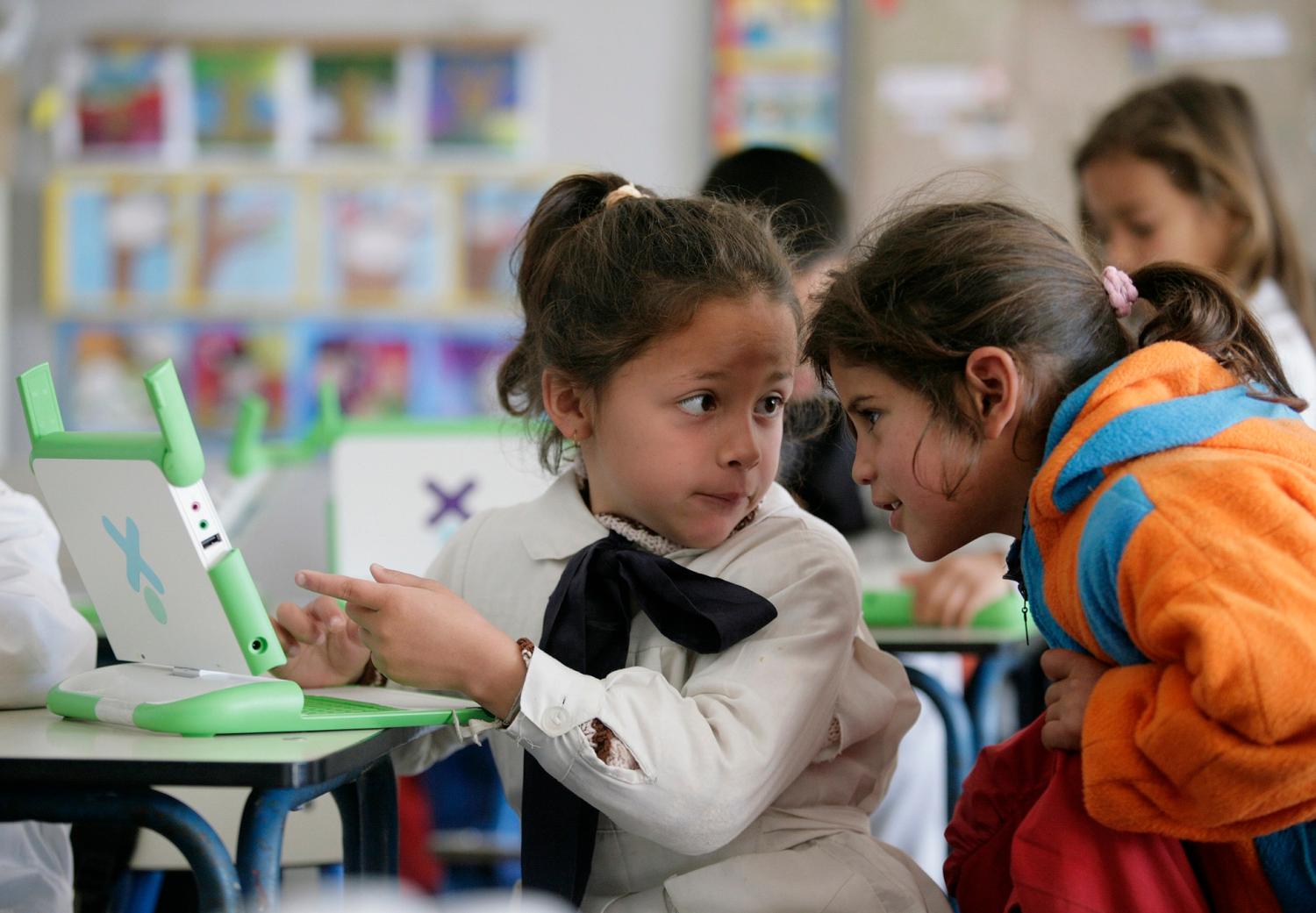There are well-documented achievement and opportunity gaps by income and race/ethnicity. K-12 accountability policies often have a stated goal of reducing or eliminating those gaps, though with questionable effectiveness. Those same accountability policies require reporting academic proficiency by gender, but there are no explicit goals of reducing gender gaps and no “hard accountability” sanctions tied to gender-subgroup performance. We could ask, “Should gender be included more strongly in accountability policies?”
In this post, I’ll explain why I don’t think accountability policy interventions would produce real gender equity in the current system—a system that largely relies on existing state standardized tests of math and English language arts to gauge equity. I’ll argue that although much of the recent research on gender equity from kindergarten through postgraduate education uses math or STEM parity as a measure of equity, the overall picture related to gender equity is of an education system that devalues young women’s contributions and underestimates young women’s intellectual abilities more broadly.
In a sense, math and STEM outcomes simply afford insights into a deeper, more systemic problem. In order to improve access and equity across gender lines from kindergarten through the workforce, we need considerably more social-questioning and self-assessment of biases about women’s abilities.
As soon as girls enter school, they are underestimated
For over a decade now, I have studied gender achievement with my colleague Sarah Lubienski, a professor of math education at Indiana University-Bloomington. In a series of studies using data from both the 1998-99 and 2010-11 kindergarten cohorts of the nationally representative Early Childhood Longitudinal Study, we found that no average gender gap in math test scores existed when boys and girls entered kindergarten, but a gap of nearly 0.25 standard deviations developed in favor of the boys by around second or third grade.
For comparison purposes, the growth of the black-white math test score gap was virtually identical to the growth in the gender gap. Unlike levels and growth in race-based gaps, though, which have been largely attributed to a combination of differences in the schools attended by black and white students and to socio-economic differences, boys and girls for the most part attend the same schools and come from families of similar socio-economic status. This suggests that something may be occurring within schools that contributes to an advantage for boys in math.
Exploring deeper, we found that the beliefs that teachers have about student ability might contribute significantly to the gap. When faced with a boy and a girl of the same race and socio-economic status who performed equally well on math tests and whom the teacher rated equally well in behaving and engaging with school, the teacher rated the boy as more mathematically able—an alarming pattern that replicated in a separate data set collected over a decade later.
Another way of thinking of this is that in order for a girl to be rated as mathematically capable as her male classmate, she not only needed to perform as well as him on a psychometrically rigorous external test, but also be seen as working harder than him. Subsequent matching and instrumental variables analyses suggested that teachers’ underrating of girls from kindergarten through third grade accounts for about half of the gender achievement gap growth in math. In other words, if teachers didn’t think their female students were less capable, the gender gap in math might be substantially smaller.
An interaction that Sarah and I had with a teacher drove home the importance and real-world relevance of these results. About five years ago, while Sarah and I were faculty at the University of Illinois, we gathered a small group of elementary teachers together to help us think through these findings and how we could intervene on the notion that girls were innately less capable than boys. One of the teachers pulled a stack of papers out of her tote bag, and spreading them on the conference table, said, “Now, I don’t even understand why you’re looking at girls’ math achievement. These are my students’ standardized test scores, and there are absolutely no gender differences. See, the girls can do just as well as the boys if they work hard enough.” Then, without anyone reacting, it was as if a light bulb went on. She gasped and continued, “Oh my gosh, I just did exactly what you said teachers are doing,” which is attributing girls’ success in math to hard work while attributing boys’ success to innate ability. She concluded, “I see now why you’re studying this.”
Although this teacher did ultimately recognize her gender-based attribution, there are (at least) three important points worth noting. First, her default assumption was that girls needed to work harder in order to achieve comparably to boys in math, and this reflects an all-too-common pattern among elementary school teachers, across at least the past couple decades and in other cultural contexts. Second, it is not obvious how to get teachers to change that default assumption. Third, the evidence that she brought to the table was state standardized test scores, and these types of tests can reveal different (often null or smaller) gender achievement gaps than other measures.
On this last point, state standardized tests consistently show small or no differences between boys and girls in math achievement, which contrasts with somewhat larger gaps on NAEP and PISA, as well as with gaps at the top of the distribution on the ECLS, SAT Mathematics assessment, and the American Mathematics Competition. The reasons for these discrepancies are not entirely clear, but what is clear is that there is no reason to expect that “hardening” the role of gender in accountability policies that use existing state tests and current benchmarks will change the current state of gender gaps. Policymakers might consider implementing test measures similar to those where gaps have been noted and placing more emphasis on gains throughout the achievement distribution. However, I doubt that a more nuanced policy for assessing math gains would address the underlying problem of the year-after-year underestimation of girls’ abilities and various signals and beliefs that buttress boys’ confidence and devalue girls, all of which cumulatively contributes to any measured gaps.
More obstacles await women in higher education and beyond
Looking beyond K-12 education, there is mounting evidence at the college and postgraduate levels that cultural differences between academic disciplines may be driving women away from STEM fields, as well as away from some non-STEM fields (e.g., criminal justice, philosophy, and economics). In fact, although research and policy discussions often dichotomize academic fields and occupations as “STEM” and “non-STEM,” the emerging research on gender discrimination in higher education finds that the factors that drive women away from some fields cut across the STEM/non-STEM divide. Thus, while gender representation disparities between STEM and non-STEM fields may help draw attention to gender representation more broadly, reifying the STEM/non-STEM distinction and focusing on math may be counterproductive to understanding the underlying reasons for gender representation gaps across academic disciplines.
In a recent study, my colleagues and I examined how perceptions on college majors relate to who is entering those majors. We found that the dominant factor predicting the gender of college-major entrants is the degree of perceived discrimination against women. To reach this conclusion, we used two sources of data. First, we created and administered surveys to gather perceptions on how much math is required for a major, how much science is required, how creative a field is, how lucrative careers are in a field, how helpful the field is to society, and how difficult it is for a woman to succeed in the field. After creating factor scales on each of the six dimensions for each major, we mapped those ratings onto the second data source, the Education Longitudinal Study, which contains several prior achievement, demographic, and attitudinal measures on which we matched young men and women attending four-year colleges.
Among this nationally representative sample, we found that the degree to which a field was perceived to be math- or science-intensive had very little relation to student gender. However, fields that were perceived to discriminate against women were strongly predictive of the gender of the students in the field, whether or not we accounted for the other five traits of the college majors. In short, women are less likely to enter fields where they expect to encounter discrimination.
And what happens if a woman perseveres in obtaining a college degree in a field where she encounters discrimination and underestimation and wants to pursue a postgraduate degree in that field, and maybe eventually work in academia? The literature suggests additional obstacles await her. These obstacles may take the form of those in the field thinking she’s not brilliant like her male peers in graduate school, having her looks discussed on online job boards when she’s job-hunting, performing more service work if she becomes university faculty, and getting less credit for co-authored publications in some disciplines when she goes up for tenure.
Each of the examples here and throughout this post reflects a similar problem—education systems (and society) unjustifiably and systematically view women as less intellectually capable.
Societal changes are necessary
My argument that policy probably isn’t the solution is not intended to undercut the importance of affirmative action and grievance policies that have helped many individuals take appropriate legal recourse. Rather, I am arguing that those policies are certainly not enough, and that the typical K-12 policy mechanisms will likely have no real effect in improving equity for girls.
The obstacles that women face are largely societal and cultural. They act against women from the time they enter kindergarten—instilling in very young girls a belief they are less innately talented than their male peers—and persist into their work lives. Educational institutions—with undoubtedly many well-intentioned educators—are themselves complicit in reinforcing the hurdles. In order to dismantle these barriers, we likely need educators at all levels of education to examine their own biases and stereotypes.
The Brookings Institution is committed to quality, independence, and impact.
We are supported by a diverse array of funders. In line with our values and policies, each Brookings publication represents the sole views of its author(s).








